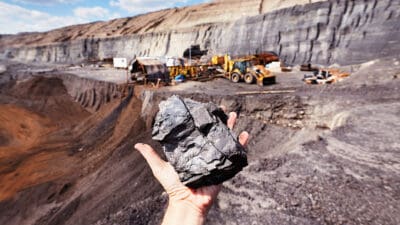The Woodside Energy Group Ltd (ASX: WDS) share price lost significant ground in September.
Shares in the S&P/ASX 200 Index (ASX: XJO) energy stock closed on 30 August trading for $27.19. Yesterday, 30 September, shares ended the day changing hands for $25.20 apiece.
That left Woodside stock down 7.3% over the month.
For some context, the ASX 200 gained 2.2% in September.
With another month in the red, the Woodside share price is down 30% over 12 months. Though that doesn't factor in the $1.937 in fully franked dividends the company declared over the year.
Now, here's what happened in September.
What happened with the Woodside share price in September?
Much of the pressure on the Woodside share price was driven by the big retrace in global oil prices.
Oil prices slid amid fears of excess supply and falling demand. Demand concerns centred on slow growth in the world's top two economies, the United States and China. On the supply side, OPEC+ is looking to wind back production cuts, while non-member nations like the US continue to produce at near-record levels.
While lower energy prices are good news for Aussie motorists and ASX travel and transport stocks, they squeeze the profit margins of oil and gas producers like Woodside.
Brent crude oil ended August trading for $78.80 per barrel. Oil reached a low of US$69.19 per barrel on 11 September and finished out the month at US$71.77 per barrel.
Not surprisingly, the Woodside share price traded at a closing low of $23.46 on 11 September, with shares marching 7.4% higher from there to the end of the month.
Along with other ASX 200 energy stocks, Woodside also continues to struggle with Australia's regulatory environment, which has caused significant delays for some of its growth projects.
That led to speculation during the month that Woodside could eventually de-list from the ASX while continuing to trade on the New York Stock Exchange (NYSE) and the London Stock Exchange (LSE).
Woodside is expanding its footprint in the US. The company recently acquired Tellurian and its Driftwood LNG development, as well as OCI's clean ammonia project.
"There appears a clear trend that Woodside is becoming more American and less Australian in response to policy and market signals that Woodside is more welcome to invest and operate in the US than Australia," MST Marquee energy analyst Saul Kavonic noted.
As for whether Woodside could eventually de-list from the ASX, Allan Gray's Simon Mawhinney said, "It affords optionality, almost an 'out', if the regulatory regime in Australia proves to be too burdensome."
Have ASX 200 investors overreacted?
According to Morgans, the Woodside share price looks to have been oversold and could now be trading for a bargain.
In September, the broker noted that Woodside is, "A tier 1 upstream oil and gas operator with high-quality earnings that we see as likely to continue pursuing an opportunistic acquisition strategy."
Morgans has an add rating on the ASX 200 energy stock and a $33.00 price target.
That represents a potential upside of more than 30% from current levels.









